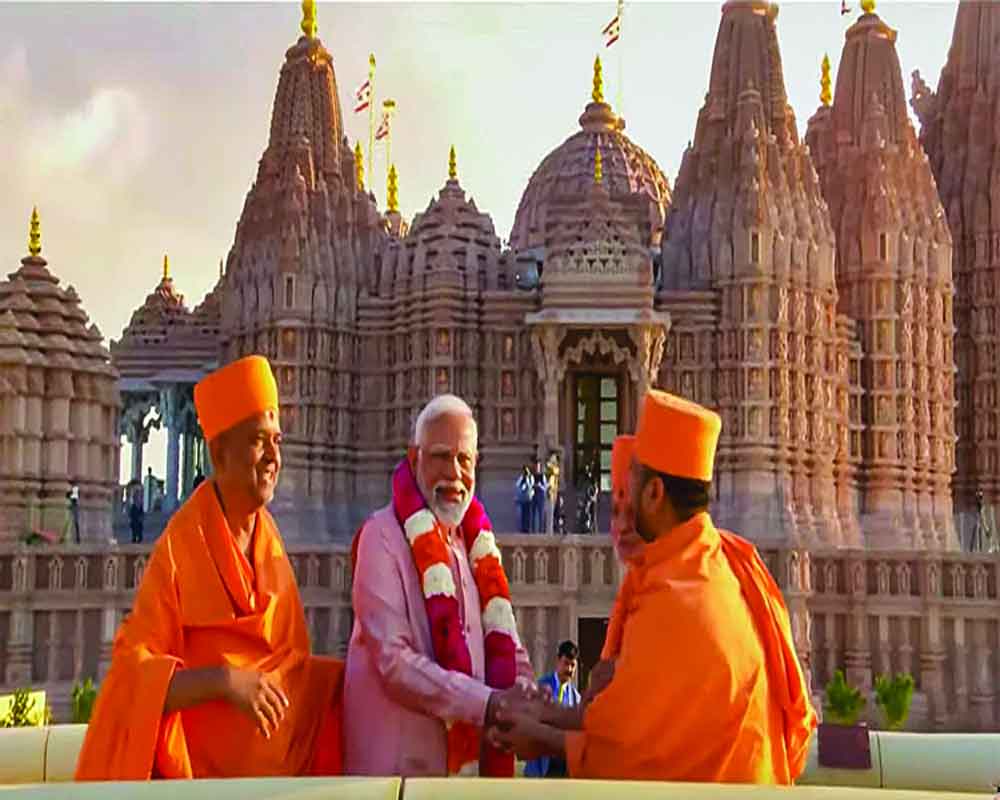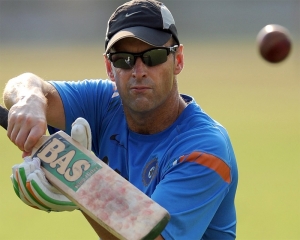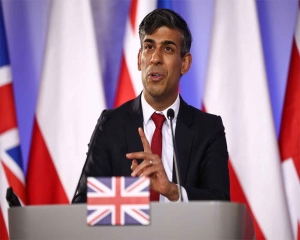This temple stands tall as a symbol of cultural integration, mutual respect and the evolving relationship between India and the UAE
The legacy of Bhagwan Swaminarayan, born in Ayodhya in the 18th century, continues to reverberate through the annals of history, shaping the spiritual and social fabric of India and beyond. His profound understanding of Hindu scriptures, coupled with a tireless seven-year pilgrimage across the length and breadth of the subcontinent, not only kindled spiritual awakening but also laid the foundation for significant social reforms. The subsequent lineage of Gurus carried forth this sacred mission, disseminating spiritual enlightenment and fostering societal progress among their devotees. It was under the sagacious guidance of Swami Shastriji Maharaj that the Bochasanwasi Shri AksharPurushottam Swaminarayan Sanstha (BAPS) was established in 1907, dedicated to nurturing individual growth through Hindu values of faith, service and global harmony.
From its humble beginnings in the western part of Gujarat, the BAPS Sanstha has blossomed into a global phenomenon, transcending geographical boundaries and cultural divides. Its emblematic Swaminarayan Temples, with their resplendent architecture and intricate designs, stand as timeless monuments of spiritual grandeur in various corners of the world. However, perhaps one of the most astonishing feats of this spiritual journey is the emergence of a magnificent temple amidst the unforgiving deserts of Abu Dhabi, United Arab Emirates (UAE). Today, this temple stands as a beacon of hope and harmony, welcoming over 60,000 visitors from diverse nationalities on peak days.
The inception of the Swaminarayan Temple in the UAE can be traced back to April 5, 1997, when Holiness Pramukh Swami Maharaj prophesied the construction of a monumental Mandir in Abu Dhabi while seated atop a dune in Sharjah. Despite initial skepticism and the formidable challenges posed by the region’s social and political landscape, this prophecy manifested into reality 27 years later, with the unveiling of the largest temple in the Middle East in the Abu Mureikha area of Abu Dhabi.
The journey from prophecy to fruition was fraught with obstacles, requiring unwavering dedication and steadfast resolve from the BAPS Sanstha, as well as the timely intervention of Prime Minister Narendra Modi. In 2015, a historic meeting between Prime Minister Modi and UAE President HH Sheikh Mohammed bin Zayed al Nahyan marked a pivotal moment in the temple’s trajectory. Their mutual commitment to realising Pramukh Swami Maharaj’s vision paved the way for the allocation of land for the temple in Abu Dhabi by the UAE Government.
Central to the temple’s narrative is the unwavering vision of HH Sheikh Mohammed bin Zayed al Nahyan, who emphasized the importance of preserving traditional architectural aesthetics. His endorsement of a traditional stone temple design in 2018 marked a significant milestone in the project’s development. The temple’s inauguration by Prime Minister Modi later that year, based on the approved design, served as a poignant affirmation of the enduring friendship between India and the UAE.
The construction of the temple stands as a testament to the UAE’s remarkable transformation from a desert country to a global powerhouse, driven by visionary leadership and unwavering determination. It symbolises the spirit of unity and cooperation that characterizes the nation’s journey towards progress and prosperity. The temple’s design, with its seven spires representing the seven emirates of the UAE, embodies the essence of harmony and inclusivity, reflected in the Wall of Harmony adorned with symbols from diverse cultures and nations.
With meticulous attention to detail, the temple was constructed using a blend of ancient architectural principles and modern innovations. Despite the challenges posed by the scorching desert climate, innovative solutions such as nano tiles for flooring ensured both functionality and aesthetics. The procurement of materials, including eighteen lakh bricks and seven lakh manhours of labor, underscored the monumental effort invested in realising this architectural marvel.
Surrounded by artificial representations of the Ganga, Yamuna and Saraswati rivers, the temple evokes a sense of divinity and tranquility, serving as a sanctuary of peace amidst the bustling cityscape of Abu Dhabi. Its serene ambiance and awe-inspiring architecture stand as a testament to the transformative power of faith and the enduring bond between India and the UAE.
(The writer is Deputy Chairman, Ràjya Sabha; views are personal)


























